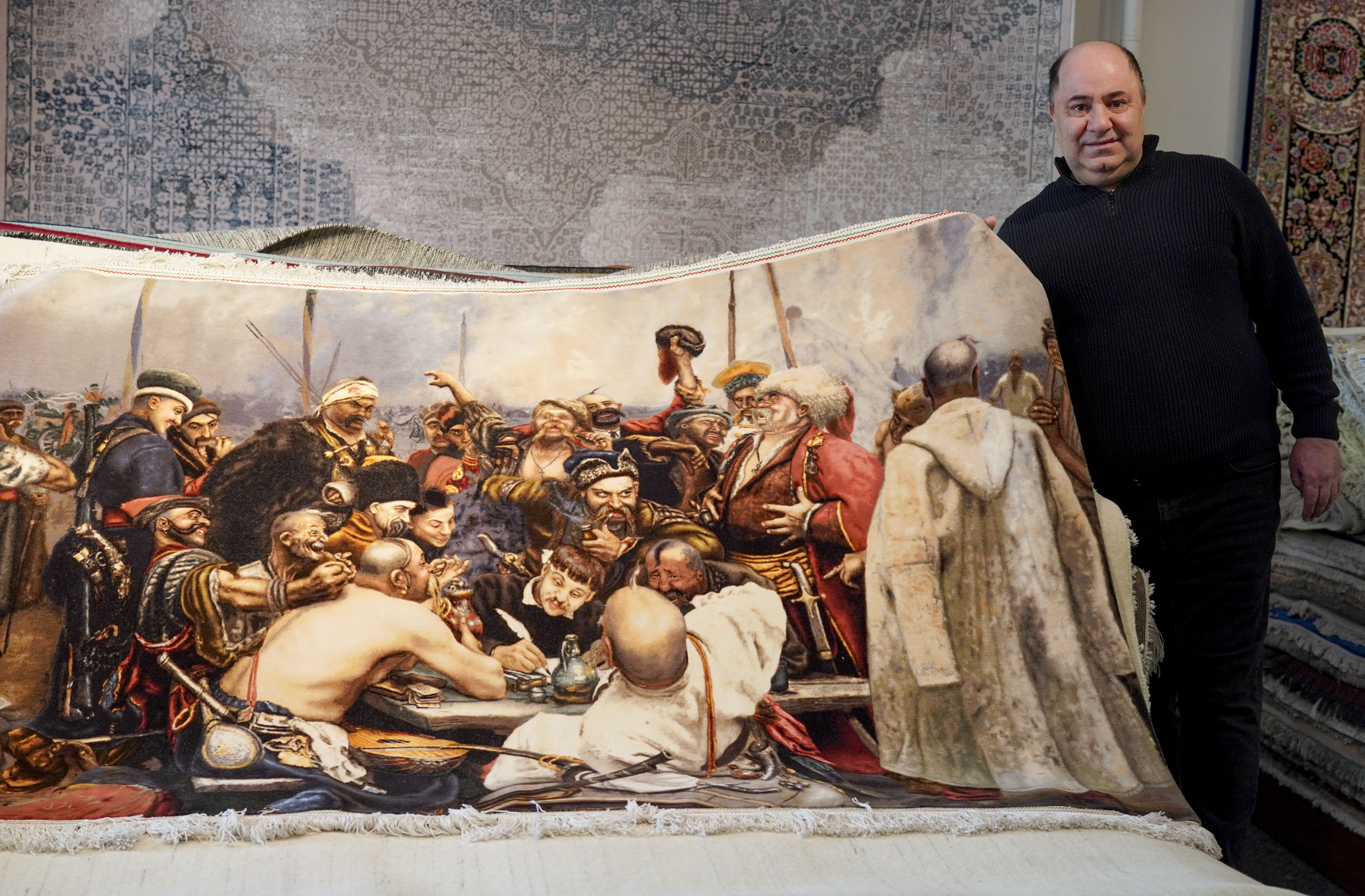Farhad Dargahi learned to repair Persian rugs when he was 20. As a young Iranian man and aspiring biologist, mastering the trade was just a means to pay his way through university.
Instead, the craft changed his path. Upon discovering the rich history and culture of Persian rug making, he decided to abandon his studies and dedicate his life to artisanship.
“I was so attracted to the art and, especially, the rugs from Iran,” said Dargahi. “Each rug is a reflection of the soul.”
Family tradition and national pride

For the past four years, Dargahi has worked in association with Daniel Bani, the owner of Caspian Rugs Centre in Calgary, Canada. This Persian rug store has been in business for three generations.
“Back home [in Iran] my grandfather created this business,” said Bani. “When the Red Army killed my grandfather, my grandma took over the business, and then, my father.”
Success
You are now signed up for our newsletter
Success
Check your email to complete sign up
The family-owned company was founded in the province of Azerbaijan, in the northwest of Iran. It expanded overseas to Toronto 28 years ago and has been headquartered in Calgary for the past 16 years.
Bani says his upbringing made it natural for him to pick up the family tradition. “From childhood, we grew up with rugs,” he said. “My father was bringing [rugs] home, or he was taking us to the shop.”

Speaking about what makes Persian rugs coveted around the world, Dargahi referred to their cultural meaning. “Iran has the longest history of handmade rugs,” he said. “This art is related to our identity, our history. It’s a matter of national pride.”
“Of course, other countries have this tradition,” he added, “But Iran is famous for the quality and the workmanship.”
Museum pieces: a journey through time
According to Dargahi, not all Persian carpets are made for use. “Some rugs go above commercial value,” he said. “They are museum pieces.”
The Caspian Rugs Centre is home to many such pieces. A prime example is a hand-woven replica of the world’s oldest rug: The Pazyryk Rug.

The original carpet, some 2,500 years old according to radiocarbon testing, currently rests in the prestigious Hermitage Museum in St. Petersburg, Russia.
Excavated from a royal grave in the Altai Mountains of Siberia in 1948, the Pazyryk carpet tells the story of the Pazyryk people, a nomadic Iron Age culture that walked the earth between the 6th and 3rd centuries BC.
The advanced weaving technique and sophisticated design of this rug have led scholars and art enthusiasts to believe that the carpet dates back even further – at least 4,000 years.
Bani’s replica is 50 years old and is valued at $12,000 CAD. Like the original, it is hand-knotted, made of pure wool and dyed with natural pigments.
A $30,000 rug: craftsmanship at its finest

The most expensive piece in Bani’s store is a handmade rug depicting a famed historical scene: The Reply of the Zaporozhian Cossacks. It is made from a famous painting of the same name, on display at the State Russian Museum in St. Petersburg.
“It took two years for a person to weave it,” said Bani. “It’s made of merino wool and a silk foundation.”
The scene shows a group of Cossacks – Ukrainian nomads – composing a defiant letter to the Ottoman Sultan Mehmed IV. Their expressions are mocking and their attire intricate.

“It’s very difficult to make the figures, like the faces and the eyes,” said Dargahi. “It is very very fine.”
Why own a Persian rug?
Why walk on hardwood or synthetic carpets when you can walk on a Persian garden? According to Bani, Persian rugs provide an experience that goes beyond comfort.
“If you pay attention, you’ll see that some rugs have [designs of] flowers,” he said. “When you walk on the rug, we say it’s like you are walking on a garden.
Persian carpets can also add charm to social gatherings. According to Masih Ariani, an Iranian software developer based in Toronto, this is one of the reasons why rugs are a major feature of Persian homes.
“Gathering and socializing are an important part of Persian culture,” he said. “Persian carpets give more beauty and warmth to these aspects of our culture.”

Authentic Persian rugs are hand-woven from organic materials, mainly wool and silk. Dargahi says that this makes them a healthier choice.
“Acrylic rugs are basically plastic,” he said. “They can cause allergies because they have chemicals.”
“But with things like Persian handmade rugs, they are 100% wool or silk,” he added. “It’s all natural material, and they don’t cause any health issues.”
Slowly fading away
Bani says that most of his customers are non-Persian. Canadians, he says, are attracted by the vibrant colors and admirable designs, while most European customers are driven by their unparalleled quality.
However, the characteristic quality and beauty of Persian rugs, which can only be produced through patience and devoted craftsmanship, are at risk of fading away.

“Because of the economy in Iran, rug exportation is almost zero,” said Dargahi. “There is so much inflation [there], that it’s not convenient to do this job. It’s almost impossible.”
Bani says generational changes have also led to the decline of carpet weaving in Iran. “The older generation was more hardworking,” he quipped. “Today, people are behind the computer.”
He said he believes that, over time, authentic Persian rugs will become scarce. “Every year, the production is decreasing by 10 to 15 per cent,” he explained. “I think that, in the future, each rug you have at home is going to be like a museum piece.”













